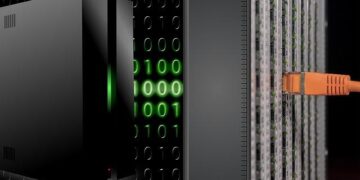In a groundbreaking development, scientists have successfully reversed stroke damage using stem cell therapy, offering new hope for millions affected by the debilitating condition. Researchers announced today that experimental treatments involving the transplantation of specialized stem cells have not only minimized brain injury but also restored lost neurological functions in stroke patients. This pioneering approach, detailed in a recent ScienceDaily report, marks a significant breakthrough in regenerative medicine and could transform the future of stroke recovery.
Scientists Harness Stem Cells to Repair Stroke-Induced Brain Damage
In a groundbreaking advance, researchers have successfully utilized stem cells to restore brain function impaired by stroke, marking a significant leap forward in neuroregenerative medicine. The study demonstrates how specialized stem cells can migrate to damaged brain regions, promoting the regeneration of neural networks and reducing inflammation. This approach not only halts further deterioration but actively encourages the brain’s own repair mechanisms, offering hope for millions affected by stroke-related disabilities worldwide.
Key findings of the research include:
- Stem cells differentiate into multiple neural cell types, replacing those lost to ischemic injury.
- Reduction in scar tissue formation, facilitating improved signal conduction across affected areas.
- Enhanced synaptic connectivity and cognitive recovery observed in preclinical models.
| Parameter | Before Therapy | After Stem Cell Treatment |
|---|---|---|
| Motor Function | Poor | Significantly Improved |
| Neural Inflammation | High | Substantially Reduced |
| Neurogenesis Rate | Minimal | Elevated |
Breakthrough Findings Reveal Mechanisms Behind Neural Regeneration
Recent experiments have demonstrated how specific populations of stem cells can be coaxed to repair and regenerate damaged neural tissue post-stroke. Researchers identified key molecular signals that enable transplanted cells to integrate seamlessly into the brain’s existing architecture, promoting recovery of motor and cognitive functions. These cells exhibit remarkable plasticity, differentiating into various neural subtypes and reestablishing synaptic connections previously lost to ischemic injury.
Detailed analysis revealed three primary mechanisms responsible for this regeneration process:
- Neuroprotection: Stem cells release protective factors that minimize secondary neuronal death.
- Neurogenesis stimulation: Activation of resident neural progenitors boosts intrinsic repair capacity.
- Synaptic remodeling: Restoration of damaged circuits enables functional reconnection.
| Mechanism | Effect | Result |
|---|---|---|
| Neuroprotection | Secretion of growth factors | Reduced cell death |
| Neurogenesis | Stimulation of progenitor cells | New neuron formation |
| Synaptic Remodeling | Rewiring neural networks | Restored brain function |
Experts Advise Accelerated Clinical Trials to Validate Stem Cell Therapies
Leading scientists emphasize the urgent need for accelerated clinical trials to establish the safety and efficacy of stem cell therapies aimed at reversing stroke-induced brain damage. Recent preclinical studies have showcased remarkable progress in regenerating neural tissue, but experts caution that moving swiftly into human trials is essential to translate these findings into widespread medical treatments. The consensus among researchers is that streamlined regulatory frameworks, combined with robust trial designs, could significantly reduce the time it takes for these therapies to reach patients.
Key recommendations from the scientific community include:
- Implementing adaptive trial protocols to accommodate emerging data.
- Collaborating across international research centers to pool resources and patient data.
- Integrating biomarkers and advanced imaging techniques to monitor treatment progress in real time.
| Trial Phase | Duration | Primary Outcome |
|---|---|---|
| Phase 1 | 6 months | Safety & Dosage |
| Phase 2 | 12 months | Preliminary Efficacy |
| Phase 3 | 18-24 months | Confirmatory Efficacy & Side Effects |
To Conclude
The groundbreaking advancement in using stem cells to reverse stroke damage offers new hope for millions of patients worldwide. As researchers continue to refine these techniques and move toward clinical trials, the potential for restoring lost neurological function may soon become a reality. This promising development marks a significant step forward in stroke treatment and underscores the transformative power of regenerative medicine.































